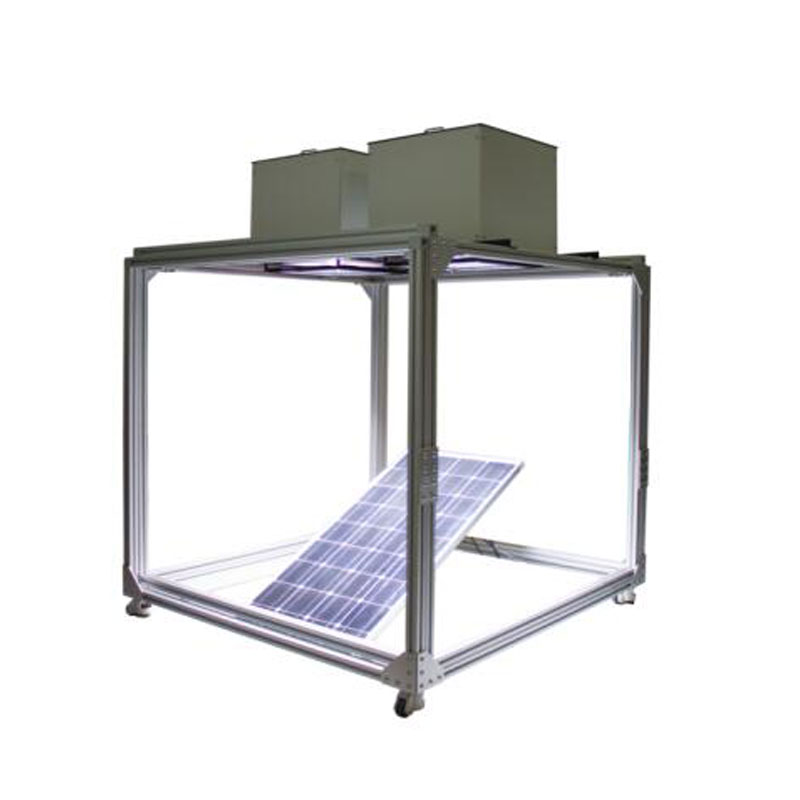Tianyi Sensor IOT Technology Co., Ltd
Sales Manager:Ms. Emily Wang
Cel,Whatsapp,Wechat:+86 15898932201
Email:info@fengtutec.com
Add:No. 155 Optoelectronic Industry Accelerator, Gaoxin District, Weifang, Shandong, China

Sales Manager:Ms. Emily Wang
Cel,Whatsapp,Wechat:+86 15898932201
Email:info@fengtutec.com
Add:No. 155 Optoelectronic Industry Accelerator, Gaoxin District, Weifang, Shandong, China

Model:FT-MT1
Brand:tianyi
1.Solar simulation systems product overview
Solar simulation systems produce lighting that approximates natural sunlight, providing controlled indoor testing for the effects of solar radiation on materials.Solar simulation systems provide an environment close to natural sunlight, achieving 24-hour uninterrupted light without being affected by environmental, climate and time.Widely used in solar cell characteristic testing, dye-sensitized batteries (DSSC), perovskite batteries (PSC), photoelectric material characteristic testing, biochemistry-related testing, accelerated research on optical catalytic degradation, skin cosmetics testing and environmental research.
2.Product features of Solar simulation systems
1.Advanced intelligent adjustment of irradiation intensity can be adjusted according to experimental requirements and time-sharing according to experimental stages.
2.The light direction is vertically upward and downward, horizontally left and right.Irradiation in all directions.
3.Customize the irradiation area according to the needs of 1-100 square meters
4.Three intelligent controls: can be controlled manually, can be controlled by the client, and can be controlled by the cloud.
5.Fan power-off delay function.After shutting down, the equipment cooling system will delay power off, and there is no need to be left behind manually, saving working time and improving the service life of the equipment.
6.Extra-long service life: The lifespan of the lamp is more than 2,000 hours.
3.Solar simulation systems technical indicators
| name | Technical Specifications |
| Irradiation area | 1~100 square meters, customized according to experimental requirements |
| Light source type | Long arc pulse xenon lamp |
| Light inhomogeneity | ±10% |
| Light instability | ±10% |
| Spectral distribution | Class B |
| Control method | Manual, client, and cloud control |
| Cooling method | Delayed air cooling |
| Working environment | Ambient temperature: -20~40℃, relative humidity: ≦70% |
| Power supply method | AC380V, three-phase five-wire inlet |
| Lamp life | 2000 hours |
| Lighting direction | Vertical upwards downwards, horizontally left to right |
| Radiation intensity | 400~1800 W/m2 |
| Light source output | Parallel light illumination |
After long-term use, photovoltaic modules are prone to various defects. Issues such as microcracks and degradation can seriously affect power generation efficiency and the lifespan of the system. This is where the EL detector, a photovoltaic operation and maintenance device, comes into play. It is a...
A meteorological observation station is a facility used to monitor and record meteorological information. It collects data on weather conditions through various instruments and equipment, providing important basis for weather forecasting, climate research and disaster warning.As a professional facil...
Laser methane telemeter, leveraging laser technology, is used to detect the concentration of methane gas in the environment and has been widely applied in natural gas stations, the petroleum and petrochemical industry, the metallurgical industry, the power industry and other places.According to diff...
The operation of air quality monitoring stations relies on a comprehensive grid-based environmental supervision system. This system takes towns, communities (and villages) in cities as basic units, and divides them into air pollution prevention and control management grids according to different lev...